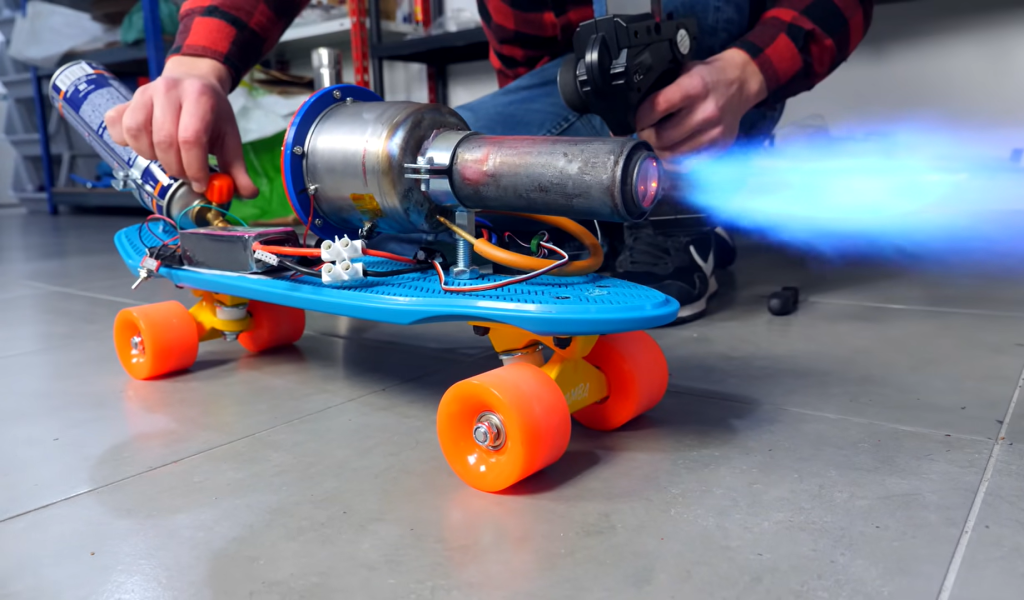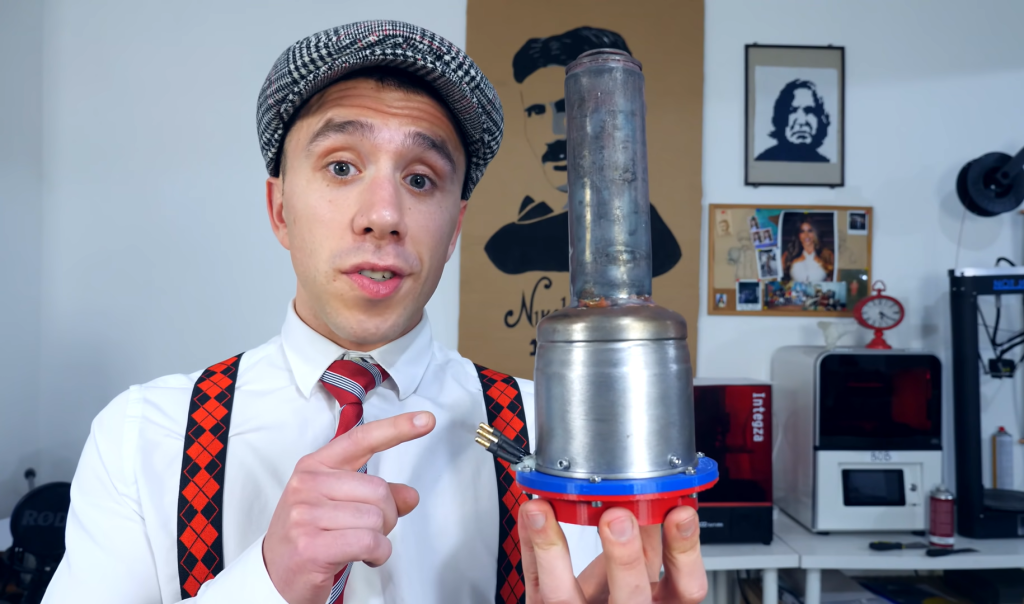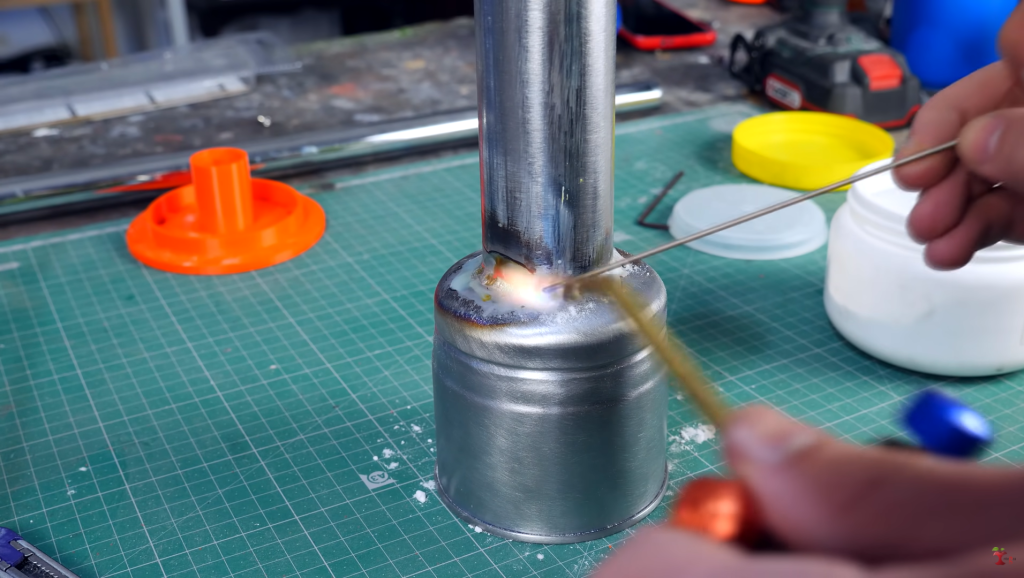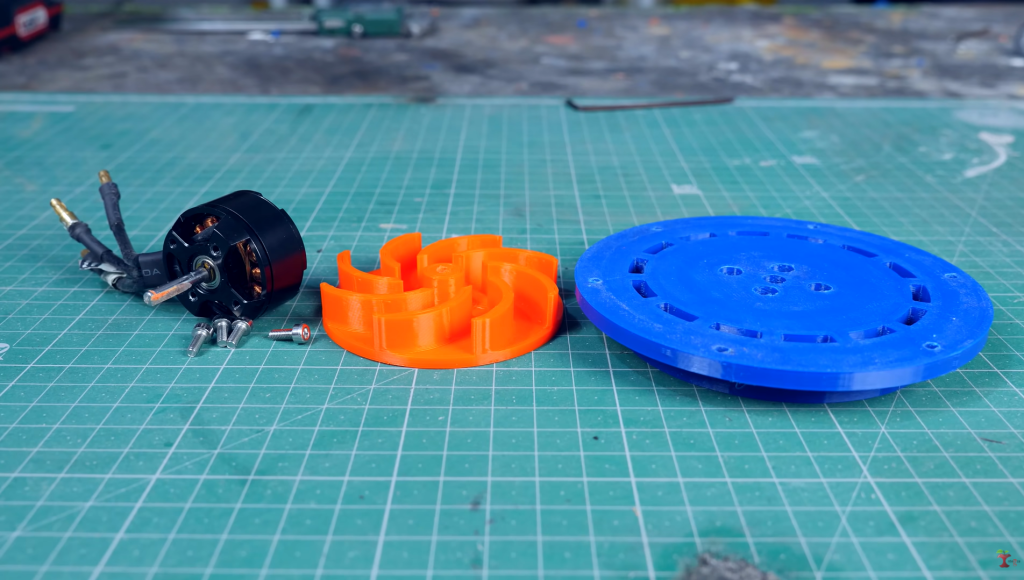Tech Youtuber Integza has showcased his latest 3D printing project, a fully-functional electric jet engine built from scratch.
Loosely based on the design of a conventional turbojet engine, the miniature device doesn’t use jet fuel at all. Instead, it leverages an electric motor, a DIY body made of tin, and an entirely 3D printed compressor fan, generating enough thrust to move a skateboard.
Integza has been trying to 3D print a working jet engine (that doesn’t melt) for some time now, so his latest project is a step towards realizing his long-standing dream.
He said, “I’m very happy about the fact that I built a jet engine and it didn’t melt in the first ten seconds. I mean I’m so happy that I don’t even care about the fact that I accidentally burnt my microphone.”

The beauty of the turbojet engine
The turbojet engine is often regarded as the crème de la crème of jet engines.
What makes the engineering marvel so great is that it actually has a fairly simple working premise. A fast-spinning bladed compressor sucks in air, which is mixed with fuel and ignited in a combustion chamber. The exhaust from the reaction is then directed out the back of the engine, generating thrust.
Turbojet designs are also self-sustaining in that the energy from the exhaust is recycled back into the compressor to keep the entire assembly moving. This is done via a turbine at the back that’s connected to the compressor at the front. This rear turbine is placed in the path of the high-speed exhaust which spins it, in turn spinning the compressor at the front to create a feedback loop. This is also the basic idea behind turbochargers in cars.
While the theory behind turbojets is actually quite digestible, actually building one is an entirely different beast. For turbojets to work, all of the components need to be perfectly balanced and all of the turbines need to spin at up to 25,000RPM or more. This is impossible to achieve in a garage workshop so Integza simply replaced the rear turbine with an electric motor to power the compressor.

Building the electric jet engine
The first step of the project was to build the engine’s casing. For this, he had the idea of repurposing two butane canisters as they already had the right size and shape for the jet engine. Integza emptied the cans out and welded them together to create the body.
Next up was the compressor. Luckily, the compressor is stored in the cold part of the engine away from any heat, so it’s possible to simply 3D print the impeller blades using any run-of-the-mill polymer like ABS.
Now comes the tricky part: creating and controlling the combustion. It wasn’t enough to simply inject butane gas into the body and ignite it, as this would be far too inefficient to generate thrust. The engine needed a steady stream of low-speed, high-pressure air directed towards the back. To enable this, modern-day turbojets use a special type of combustion chamber called an annular combustion chamber, so Integza built his own using a DIY spot welder. He also built a low-cost spark plug for ignition.
Once assembled, he strapped the jet engine to a skateboard and connected it to a battery-powered electric motor to spin the compressor. Amazingly, it worked. Despite weighing in at only 325g, the electric jet engine generated enough thrust to push the 3.2kg skateboard (albeit at a snail’s pace).
Content creators like Integza provide an accessible way for us to learn more about 3D printing and its capabilities. Last year, he also used 3D printing technology to develop a low-cost functional rocket engine inspired by an old, experimental Nazi design. Based on the engine of a 1930s German aircraft called the Heinkel He 176, the 3D printed rocket engine doesn’t rely on burning fuel or combustion at all, instead generating its thrust via a volatile chemical reaction.
More recently, YouTuber Austen Hartley designed and 3D printed his own pair of custom, low-cost Crocs. Armed with nothing but a standard desktop FFF 3D printer and flexible TPU filament, the mechanical engineer even printed a few additional accessories to provide that much-needed flair, including a logo and a sports car spoiler.
Subscribe to the 3D Printing Industry newsletter for the latest news in additive manufacturing. You can also stay connected by following us on Twitter, liking us on Facebook, and tuning into the 3D Printing Industry YouTube Channel.
Looking for a career in additive manufacturing? Visit 3D Printing Jobs for a selection of roles in the industry.
Featured image shows Integza and his electric jet engine. Photo via Integza.





